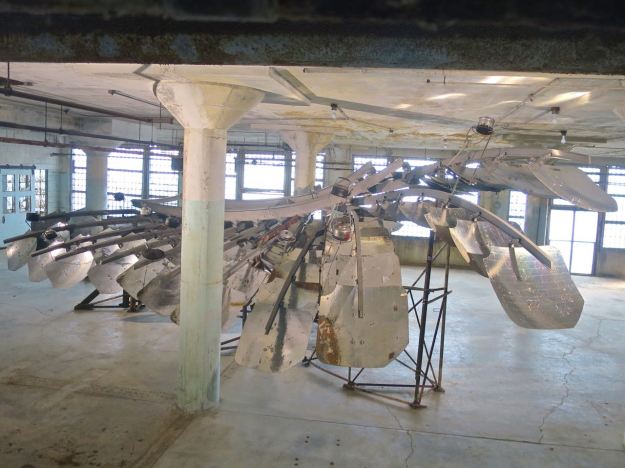Behold The Pataphysical Slot Machine, our community-created poetic oracle.
This unique art exhibit engages people of all ages to inquire about their future and act on it. It encourages creative exploration by combining visual arts and new technology, the ‘maker spirit’ and ‘combinatorial poetics’.
Here’s a short video of the Pataphysical Slot Machine in action.
Visitors are invited to sit on the Pataphysical throne, facing three mysterious cabinets of curiosity. You can ask Ubu, our patron saint, for “instructions from the future”: he shares surreal and whimsical words of advice (e.g.: “Embrace purple sky”), which are printed on your receipt — and spoken with a thick french accent.
For more inspiration, guests can then open one of 20 “wonderboxes”. Each box contains a different art scene: a singing flower, an alien invader, a red devil, a happy buddha or a native shaman, for example. Some of them sparkle with lights, some speak to you, others are animated robots — and an ‘olfactory clock’ tells the time with scents of cinnamon buns or blueberry pie.
These slides show what the art exhibit looks like. To see the many ways in which people interact with the Pataphysical Slot Machine, check our photo stream on Flickr.
The art is inspired by many world cultures, the steam-punk movement — and by Alfred Jarry, founder of ‘Pataphysics, the “science of imaginary solutions.” The technology is based on Arduino and Raspberry Pi platforms, networked together — and soon to be connected to the Internet. See our interactive specs.
We are a team of artists, technologists and educators based in Mill Valley, California. Our members include Fabrice Florin (@fabriceflorin), Howard Rheingold (@hrheingold), Freddy Hahne (@arewereally), Stephanie Levene, Donald Day, Tim Pozar, Janey Fritsche, Mark Petrakis, Jean Bolte and many other friends, family and neighbors. Meet our crew in this ‘day in the life’ video.
We work together as a ‘peer learning network’: we teach each other what we know, across all levels of expertise. To share what we’ve learned, we teach ‘maker art’ workshops to show students of all ages how to create their own interactive art with electronics. We also maintain an extensive online documentation, and sometimes host online hangouts, to show you how to build your own interactive art — like this ‘geekout’ on motors and Arduino, held by video conference last fall.
We unveiled the Pataphysical Slot Machine at the Mill Valley Library in October 2015, when hundreds of visitors got a chance to interact with Ubu and friends. Read more about the events we hosted and what we discovered together.
Collaborative art is a wonderful thing. We invite you to create your own interactive art, wherever you are. Join the movement and start a maker art group in your neighborhood. And remember to have fun with it: ‘pataphysics is the art of not taking yourself too seriously’ 🙂
Fire in the hole!
Video, photos and narration by Fabrice Florin. Recorded at the Rheingold Room in Mill Valley, California, in February 2014. Music by Erik Satie and others.





















































